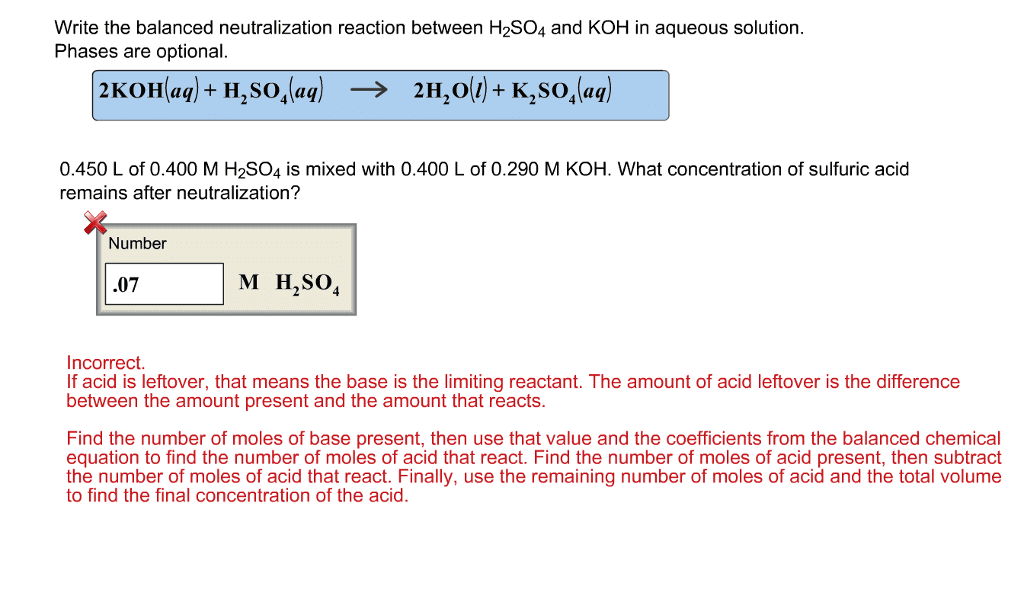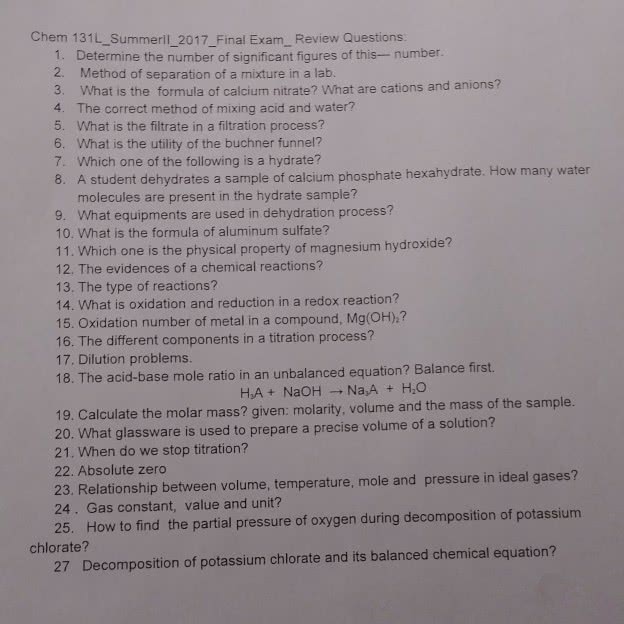CHM 131 Lecture Notes - Lecture 10: Redox, Limiting Reagent, Chemical Equation
Document Summary
Acid-base neutralization reactions involve the reaction of an acid with a base, to form a salt and usually water. Redox reactions involve a change in oxidation state for one or more elements. Precipitation reactions have the general form where an insoluble salt is produced from two soluble salts. If acid is leftover, that means the base is the limiting reactant. The amount of acid leftover is the difference between the amount present and the amount that reacts. Find the number of moles of base present, then use that value and the coefficients from the balanced chemical equation to find the number of moles of acid that react. Find the number of moles of acid present, then subtract the number of moles of acid that react. Finally, use the remaining number of moles of acid and the total volume to find the final concentration of the acid. The equation is 2na3po4(aq) + 3cucl2(aq) -> cu3(po4)2(s)+ 6nacl(aq)




